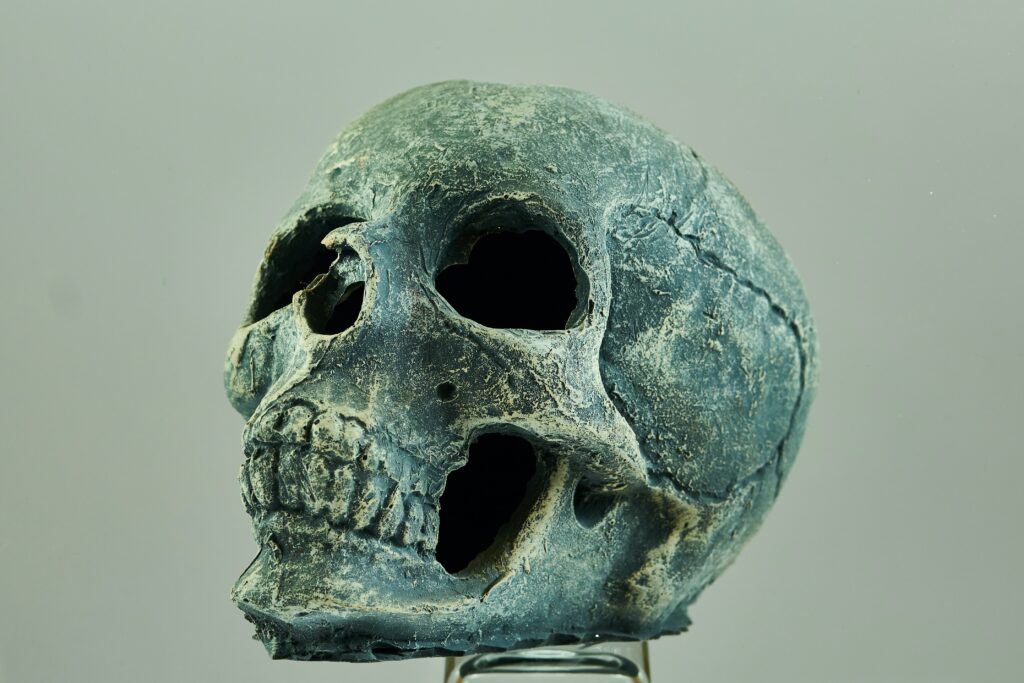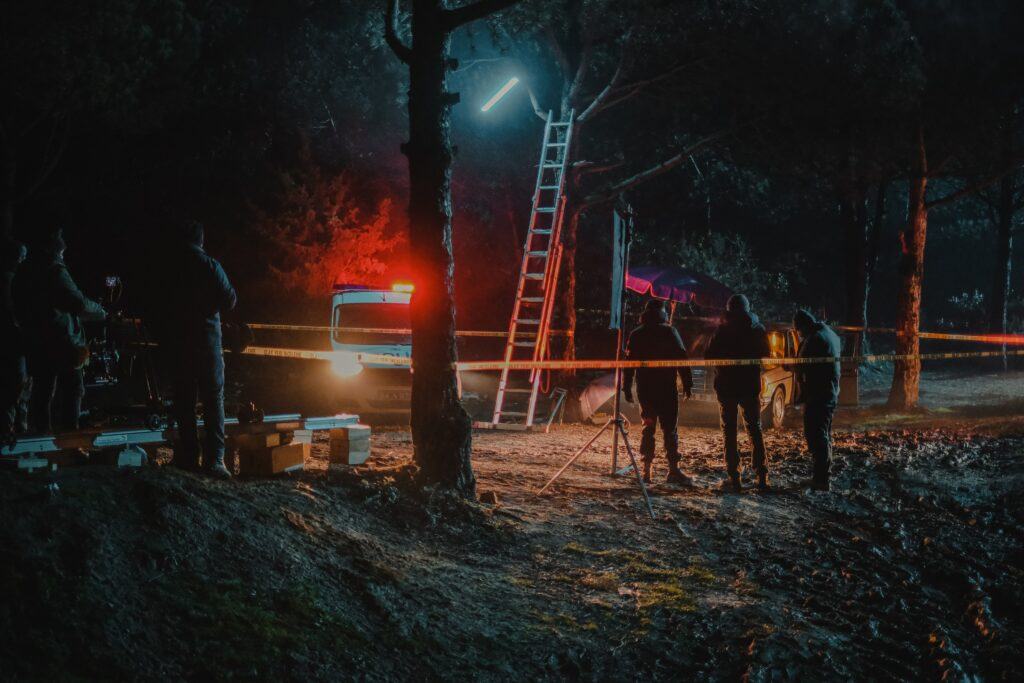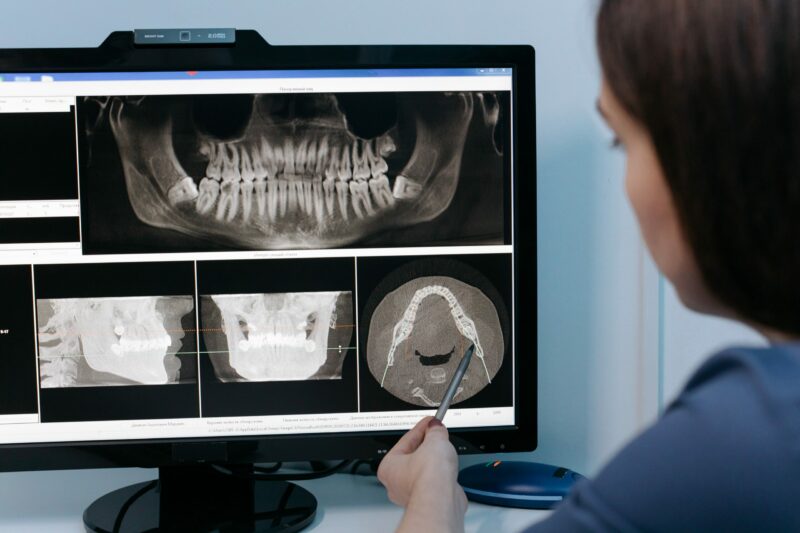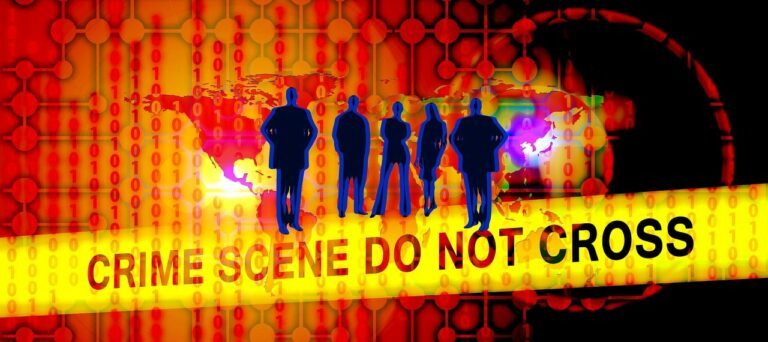3 Essential Ways Forensic Odontology Solve Crimes
Forensic odontology, a remarkable branch of forensic science, plays a pivotal role in unraveling crimes. This field involves identifying victims and suspects by examining their teeth and bite marks. In this blog post, we’ll explore the fascinating world of dental forensics and how it aids crime scene investigations.
Forensic odontology relies on dental records, X-rays, and DNA analysis to establish the identities of individuals involved in criminal cases. The key principle here is that our dental features are unique, much like our fingerprints. When someone goes missing or is found deceased in a state that hinders visual identification, their dental records become a crucial tool for resolution.
Dental records are detailed documents maintained by dentists. They encompass a person’s dental history, including dental treatments, X-rays, and photographs. These radiographs reveal unique features like fillings, fractures, and the arrangement of teeth.
Therefore, by comparing these records to unidentified remains, forensic odontologists can make positive identifications, bringing closure to distraught families and aiding law enforcement.
We will dive into these aspects in detail throughout this blog post, shedding light on both the potential and the hurdles in this captivating forensic discipline.
Dental Records in Forensic Odontology
Dental records, maintained by diligent dentists, are comprehensive records that contain an individual’s dental history. The comprehensive nature of these records helps forensic odontologists piece together the dental profile of a person.
For example, when a person goes missing or is found deceased in a state where visual identification is not feasible, these records are crucial. Forensic odontologists compare the dental features found in these records to those observed in the unidentified remains. The goal is to identify specific characteristics, such as dental work, missing teeth, and dental anomalies, that can serve as a fingerprint for the individual.
The comparison process is meticulous, involving a thorough examination of dental charts and X-rays. The focus is on finding unique and distinguishing features that can establish a definitive link between the dental records and the remains. The use of these records has been instrumental in countless criminal investigations.
One noteworthy example is the case of the Green River Killer, Gary Ridgway. Dental records played a crucial role in confirming the identities of his victims, enabling law enforcement to build a case against him.
However, challenges may arise when dental records are incomplete, outdated, or unavailable. In such instances, forensic odontologists may need to rely on other methods, like DNA analysis, to establish identities.
These challenges emphasize the need for accurate record-keeping and the critical role that dental professionals play in aiding forensic investigations.
In the following sections, we’ll explore additional methods, including dental radiographs and DNA analysis, to further highlight the power of forensic odontology in solving crimes.
Radiographs in Dental Forensics
Radiographs, commonly known as dental X-rays, are like hidden keys in the world of forensic odontology. These images, taken by dentists during routine check-ups or specific dental procedures, unveil the details of an individual’s teeth and their unique features.
The process of using dental radiographs for identification involves a meticulous comparison. Experts carefully examine the dental X-rays from the records of the missing or deceased individual and those taken from the remains. They scrutinize the images, paying close attention to details such as fillings, fractures, dental anomalies, and the overall structure of the teeth. The goal is to identify matching features or unique identifiers that can establish a conclusive link.
Dental radiographs, owing to their high level of detail and specificity, have played a pivotal role in solving numerous criminal cases.
For example, one noteworthy case demonstrating the significance of radiographs is the identification of the victims of the 9/11 terrorist attacks. When traditional identification methods failed due to the extent of the destruction, dental radiographs became a lifeline. They helped connect the victims to their dental records and, subsequently, their families.
While dental radiographs are a powerful tool, they do have limitations. The quality of the radiographs, the time lapse between dental work and identification, and the skills of the forensic odontologist all play a role in the success of police investigations.
Forensic Odontology: DNA Analysis
When dental records and radiographs fall short or are unavailable, forensic odontologists have one more ace up their sleeves – DNA analysis. This advanced technique has revolutionized the world of forensic identification and can provide that crucial link to unravel the mysteries hidden within dental remains.
DNA, the genetic material unique to every individual, can also be found in dental tissues like the pulp, roots, or dentin. In cases where traditional methods may be inconclusive or unavailable, DNA analysis serves as a potent tool to confirm the identity of individuals.
The process starts with the collection of a dental sample, typically from the dental pulp. This sample is then subjected to DNA testing, where scientists extract and analyze the genetic information. Moreover, the obtained DNA is compared to a reference sample, often obtained from family members or stored biological samples. If the two samples match, it serves as irrefutable evidence of identity.
The use of DNA analysis in dental identification is instrumental in solving complex and challenging cases. For instance, in mass disasters or cold cases where the remains are severely degraded, DNA analysis can provide the necessary confirmation. It has brought closure to families waiting for answers for decades.
The case of the “Golden State Killer” illustrates the power of DNA analysis. A decades-old cold case was solved when DNA evidence collected from crime scenes was matched to genetic information on a genealogy website, leading to the identification and apprehension of the suspect.
However, it’s important to note that DNA analysis is not without its challenges. The quality of the DNA sample, contamination issues, and the need for a reference sample for comparison are factors that can affect the success of the process. But when used in conjunction with dental records and radiographs, DNA analysis provides an unmatched level of certainty in the field of forensic odontology.
In the following sections, we’ll delve into the challenges and limitations of bite mark analysis and further explore the complexities of forensic odontology.

Challenges and Limitations of Bite Mark Analysis
Bite mark analysis, a subset of forensic odontology, is a fascinating yet complex field. It involves examining bite marks on victims or objects to establish identity or provide insight into a crime. While it has been portrayed dramatically in crime shows, it comes with its own set of challenges and limitations.
One of the primary challenges in bite mark analysis is the variability of human bites. Each person’s bite is unique, but it can also change over time due to factors like dental work, shifting teeth, or oral injuries. This makes it difficult to precisely match a bite mark to a single individual.
Bite marks can also become distorted over time. The elasticity of human skin and the healing process can alter the appearance of bite marks, making them harder to interpret accurately. Environmental factors, such as the surface on which the bite mark is found, can further complicate the analysis.
Another significant limitation is the lack of scientific standards in bite mark analysis. Unlike fingerprint or DNA analysis, bite mark analysis lacks a consistent, universally accepted methodology. This has raised concerns about the reliability and subjectivity of bite mark evidence in courtrooms.
Moreover, bite mark analysis has faced scrutiny due to several cases where individuals were wrongfully convicted based on flawed bite mark evidence. The limitations and potential for misinterpretation highlight the need for rigorous scientific validation and standards in this field.
In terms of individualization, bite mark analysis often falls short. While it may be possible to exclude some individuals based on a bite mark, establishing a conclusive identification is exceptionally challenging due to the inherent variability and limitations.
To address these issues, forensic odontologists are working to improve the reliability of bite mark analysis through research and the development of standardized procedures. However, it’s important for both the legal and scientific communities to approach bite-mark evidence with caution and to consider it as part of a broader body of evidence rather than as the sole determinant of guilt or innocence.
As we continue our exploration of forensic odontology, we will go deeper into the ethical and legal considerations surrounding this field and the need for a balanced and rigorous approach to solving crimes.
Ethical and Legal Considerations in Forensic Odontology
In the world of forensic odontology, where dental records, radiographs, and bite mark analysis play a vital role in identifying individuals, ethical and legal considerations are paramount.
Informed Consent and Privacy
One of the foundational ethical principles in forensic odontology is the need for informed consent. Dental records, X-rays, and other dental information are deeply personal and confidential.
Forensic Dentists must obtain explicit consent from patients before sharing their dental records or information with law enforcement or forensic experts. Patients have the right to know how their dental data may be used and who will have access to it. Respecting this consent is not only ethically essential but also legally required in many jurisdictions.
Balancing Justice and Privacy
Forensic odontologists and legal authorities must carefully balance the pursuit of justice with individual privacy rights. The invasive nature of bite mark analysis, for example, often involves close scrutiny of a person’s body. This demands a high level of responsibility and sensitivity to privacy concerns, especially in cases where bite mark evidence is contested.
Accuracy and Reliability
The ethical responsibility of forensic odontologists extends to ensuring the accuracy and reliability of their findings. Misidentifications can have severe consequences, from wrongful convictions to failed investigations. As such, adhering to scientific rigor and maintaining high ethical standards in analysis and reporting is paramount.
Forensic Odontology: Interdisciplinary Collaboration
Collaboration between forensic odontologists and other experts, such as DNA analysts and pathologists, is crucial. It ensures a more comprehensive approach to solving cases and helps cross-verify findings. Ethical considerations extend to sharing information and working cohesively with other professionals to reach accurate conclusions.
Forensic Odontology: Legal Admissibility
Forensic odontologists often find themselves testifying in court. Ensuring that their findings and methods meet legal standards for admissibility is a significant ethical and legal concern. The lack of standardized methodologies in bite mark analysis, for instance, has led to debates over the admissibility of bite mark evidence in court.
In summary, forensic odontology is a powerful tool in crime scene investigations, but its use must be guided by a strong ethical framework and a respect for individual rights and privacy. The pursuit of justice should never compromise the principles of informed consent, accuracy, and fairness in the legal system.
As we continue our exploration of this fascinating field, we will talk about real-life cases that highlight the complex interplay between ethics, science, and the law in forensic odontology.

Real-Life Cases and the Complexities of Forensic Odontology
To better understand the practical application of forensic odontology and its complex challenges, let’s explore real-life cases that exemplify the interplay between ethics, science, and the legal system.
Case 1: The Ted Bundy Investigation
Ted Bundy, one of the most notorious serial killers in U.S. history, left a trail of gruesome crimes in the 1970s. His criminal activities spanned several states, making it difficult for law enforcement to piece together evidence and connect him to his victims. Dental records played a pivotal role in his apprehension and conviction. When Bundy was arrested in Utah, forensic odontologists compared his dental impressions to bite marks left on one of his victims. The match was undeniable, leading to his conviction.
However, this case also highlights the limitations of bite mark analysis. While it helped convict Bundy in this instance, the field’s lack of standardization and potential for subjectivity remain ongoing concerns.
Case 2: The Oklahoma City Bombing
The tragic Oklahoma City bombing in 1995 claimed the lives of 168 people and caused extensive damage. In such mass disaster scenarios, dental identification becomes a critical tool. Forensic odontologists worked diligently to identify victims by comparing their dental records to dental remains found at the site. This painstaking process helped bring closure to the victims’ families and contributed to the legal and emotional aftermath of this tragic event.
These cases underscore the importance of dental records and radiographs in forensic odontology. They also highlight the field’s ethical and legal responsibilities, such as obtaining informed consent and ensuring the accuracy of findings.
Case 3: The Bite Mark Controversy
Bite mark analysis has been embroiled in controversy, and the case of Ray Krone serves as a stark example of the limitations and potential risks associated with this method. Krone was wrongfully convicted of murder in Arizona, primarily based on bite mark evidence. After spending over a decade in prison, DNA analysis ultimately exonerated him, revealing the inherent flaws in bite mark analysis and the need for more rigorous standards in the field.
These real-life cases demonstrate the dual nature of forensic odontology – a powerful tool capable of solving complex crimes but also a field facing ethical and legal challenges.
The Evolving Field of Forensic Odontology
Forensic odontology, like many forensic sciences, is continually evolving. With advancements in technology, changes in legal standards, and increased scrutiny, the field has seen significant developments and adaptations over the years.
Technological Advancements
One of the most notable advancements in forensic odontology is the use of digital technology. Traditional dental records, once kept on paper, are now often digitized and stored electronically. This not only makes record retrieval more efficient but also aids in cross-referencing dental information in a digital format. Additionally, digital radiography has improved the quality and accessibility of dental X-rays, making comparisons more accurate.
Moreover, 3D imaging and computer-aided technology have enhanced bite mark analysis. These tools provide a more detailed and precise view of bite marks and dental structures, potentially reducing subjectivity and improving the reliability of this method.
Legal Reforms and Challenges
Recent legal challenges have prompted a reevaluation of bite mark evidence. Courts have become more cautious about admitting bite mark analysis as evidence, especially in cases where the methodology lacks scientific rigor. This shift in the legal landscape has led to a closer examination of forensic odontology methods and a call for greater scientific validation.
Conclusion: The Enduring Significance of Forensic Odontology
Forensic odontology, a remarkable blend of dental science and crime-solving, continues to be a critical player in the field of forensic science. With its ability to identify victims and suspects through dental records, radiographs, and, when necessary, DNA analysis, it has provided answers to countless mysteries and contributed to the pursuit of justice.
Throughout this journey into the world of forensic odontology, we’ve explored the principles and methods that underpin its practices, examined the ethical and legal considerations that guide its application, and confronted the challenges and limitations it faces, particularly in the realm of bite mark analysis.
We’ve also delved into real-life cases that exemplify both the power and the complexities of this field. Cases like the Oklahoma City bombing, the Ted Bundy investigation, and the Ray Krone exoneration demonstrate the critical role that forensic odontology plays in identifying individuals, solving crimes, and sometimes, seeking justice.
As forensic odontology evolves with technological advancements, professional standards, and legal scrutiny, it remains a potent force in crime scene investigations. Hence, it’s a field that thrives on the pursuit of truth, the protection of individual rights, and the relentless quest for answers in the world of crime scene investigations.
Thank you for reading and please leave comments below. To read about Forensic Ballistics used to solve complex criminal investigations, click here.
Also, to read extensive product reviews of 2023 visit my other website.
Is Forensic odontology still used?
Yes, Forensic odontology is still used in modern forensic investigations.
What is a forensic dentist called?
A forensic dentist is called an odontologist.
Is Forensic odontology reliable?
Yes, forensic odontology is considered a reliable discipline in forensic science. It involves the examination of dental evidence, such as dental records, bite marks, and dental remains, to aid in the identification of individuals in criminal investigations or mass disasters. Forensic odontologists use their expertise in dental anatomy, pathology, and dental records analysis to provide valuable information and support to forensic investigations.
What education do you need for Forensic odontology?
Forensic odontology typically requires a dental degree (DDS or DMD) and additional specialized training in forensic dentistry through a forensic odontology fellowship or postgraduate program.
References
Here are some recommended resources for those interested in the fascinating world of forensic odontology:
- Sweet, D. (2010). Why the forensic use of bitemarks should be abandoned. Forensic Science International, 201(1-3), 77-84.
- Pretty, I. A., & Sweet, D. (2001). A look at forensic dentistry—Part 1: The role of teeth in the determination of human identity. British Dental Journal, 190(7), 359-366.
- Luntz, L. L. (2007). DNA evidence in the courtroom: A practical guide for the criminal defense lawyer. American Bar Association.
- Human Identification. In: Principles and Practice of Forensic Dentistry. Springer, Cham.
- Nambiar, P., & Naidu, M. D. (2011). Forensic odontology: A review. Journal of Forensic Dental Sciences, 3(2), 89.
- American Board of Forensic Odontology
These references encompass a range of perspectives and in-depth studies related to forensic odontology. They serve as valuable starting points for further exploration of this intriguing field and its applications in the realm of crime scene investigations.
Willie McCain






